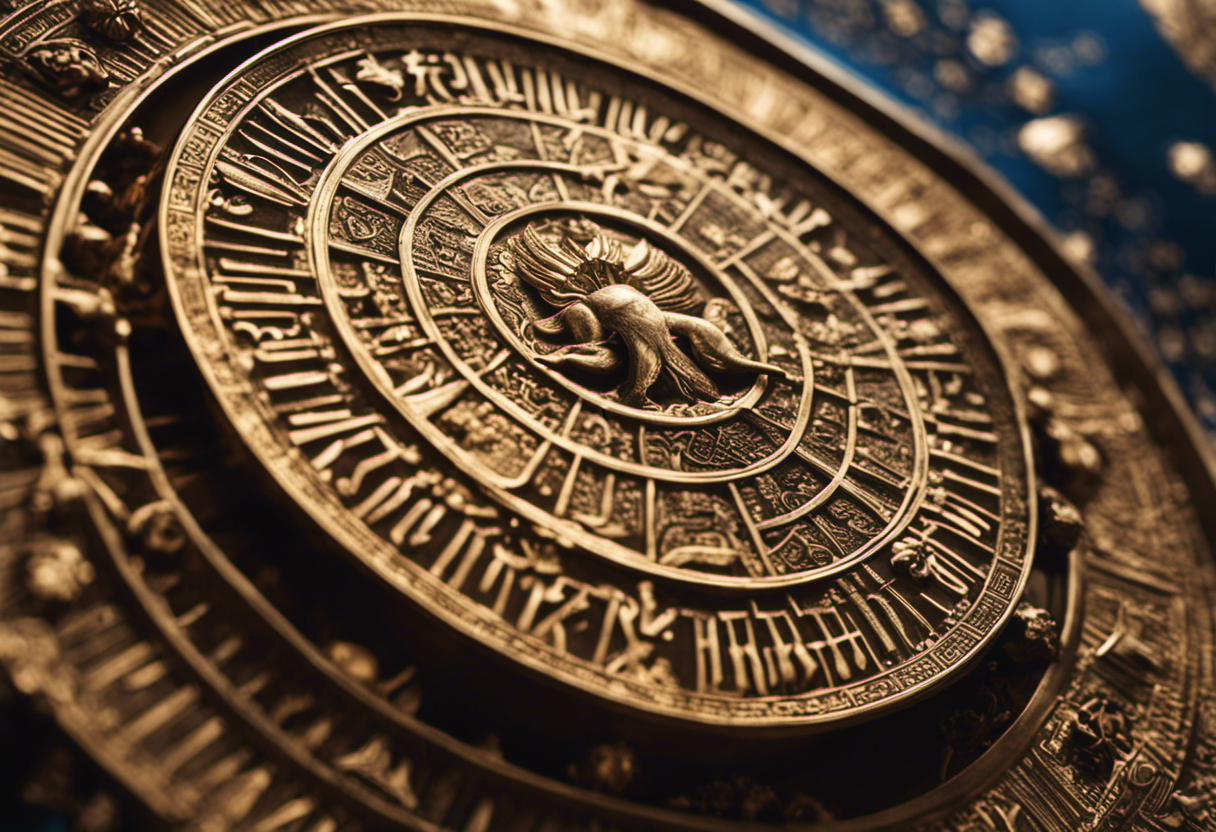The Zoroastrian calendar, an ancient system rooted in religious beliefs, holds a significant place in history. From its origins to its impact on historical events, this article explores how this calendar has shaped the course of time.
By examining its key features and religious observances, we gain a deeper understanding of the cultural and societal influences it has had. Through objective analysis, we uncover the profound legacy and relevance of the Zoroastrian calendar in the modern world.
Key Takeaways
- The Zoroastrian calendar, developed by Zoroaster in the 6th century BCE, played a crucial role in measuring time and had significant religious and cultural significance.
- The calendar consisted of twelve months with thirty days each and incorporated intercalary days to align with the solar year.
- The intercalary days were of great importance in determining the dates of festivals and religious observances, ensuring they occurred at appropriate times in relation to the solar year.
- The Zoroastrian calendar influenced historical events such as the establishment of Nowruz as a national holiday in Iran and the suppression and later resurgence of Nowruz after the Islamic Revolution, highlighting its enduring relevance and impact.
The Origins and Significance of the Zoroastrian Calendar


The origins and significance of the Zoroastrian Calendar provide valuable insights into the cultural and religious practices of ancient Persia. The Zoroastrian Calendar, also known as the Yazdi Calendar, is believed to have been developed by the prophet Zoroaster himself, who lived around the 6th century BCE. This calendar was not only used as a means to measure time but also played a crucial role in the religious and cultural traditions of the Zoroastrian community.
Cultural adaptations of the Zoroastrian Calendar can be seen in the way it was incorporated into the daily lives of the people. It consisted of twelve months, each with thirty days, and an additional five or six intercalary days to align the calendar with the solar year. This system allowed the Zoroastrians to track the changing seasons and agricultural cycles, which were of great importance in their agrarian society.
Moreover, the Zoroastrian Calendar had a significant influence on astrology. The positioning of the stars and planets was believed to have a direct impact on human life, and the calendar was used to determine auspicious times for various activities and rituals. Astrologers and priests would consult the calendar to determine the most favorable times for marriages, religious ceremonies, and even battles.
Key Features of the Zoroastrian Calendar System


One of the key features of the Zoroastrian Calendar system is its incorporation of intercalary days to ensure alignment with the solar year. The Zoroastrian calendar structure consists of 12 months, each with 30 days, resulting in a 360-day year. To account for the approximately 5.25 extra days in the solar year, the Zoroastrian calendar adds an additional month of five or six days every four years. This practice, known as intercalation, is based on astronomical calculations to ensure that the calendar remains synchronized with the solar year.
The intercalary days in the Zoroastrian calendar have significant implications for the religious and cultural practices of the Zoroastrian community. They are particularly important in determining the dates for festivals and religious observances, as these events are tied to specific astronomical phenomena, such as the equinoxes and solstices. By incorporating intercalary days, the Zoroastrian calendar system ensures that these events occur at the appropriate times in relation to the solar year.
Religious Observances and Festivals in the Zoroastrian Calendar


Religious adherents of Zoroastrianism actively participate in various observances and festivals throughout the year as dictated by the Zoroastrian calendar. These festivals play a significant role in the religious traditions of Zoroastrianism and serve as important occasions for followers to express their devotion and connect with their faith.
Some of the most prominent Zoroastrian festivals include Nowruz, Mehregan, and Sadeh.
Nowruz, the Persian New Year, is celebrated on the first day of spring and is considered one of the most important Zoroastrian festivals. It marks the beginning of the new year and represents the triumph of light over darkness.
Mehregan, another significant festival, honors the angel Mithra and celebrates the autumn harvest. It is a time for expressing gratitude and sharing joy with loved ones.
Sadeh, on the other hand, is a mid-winter festival that commemorates the discovery of fire by Zoroaster and serves as a symbol of warmth, light, and purity.
These festivals not only provide an opportunity for Zoroastrians to engage in religious rituals and prayers but also serve as a way to strengthen community bonds and preserve cultural traditions. They are a testament to the rich heritage and deep-rooted beliefs of Zoroastrianism, showcasing the enduring legacy of this ancient religion.
Historical Events Influenced by the Zoroastrian Calendar


A significant historical event influenced by the Zoroastrian calendar was the establishment of Nowruz as a national holiday in Iran. Nowruz, meaning ‘new day,’ is a celebration of the Persian New Year and has its roots in the Zoroastrian tradition. The Zoroastrian calendar played a crucial role in shaping the cultural and religious practices of ancient Persia, and its influence can still be seen today.
The invasion of Persia by the Arab Muslims in the 7th century CE marked a turning point in Iranian history. With the rise of the Islamic calendar, many aspects of Persian culture, including the Zoroastrian calendar, were suppressed. However, the celebration of Nowruz remained deeply ingrained in the Iranian psyche and continued to be observed, albeit in a more subdued manner.
It was not until the 20th century that Nowruz regained its prominence in Iran. Following the Islamic Revolution in 1979, the government sought to revive and promote Iranian cultural traditions as a means of reinforcing national identity. As a result, Nowruz was officially recognized as a national holiday and has since become one of the most important celebrations in Iran.
The establishment of Nowruz as a national holiday in Iran demonstrates the enduring influence of the Zoroastrian calendar on Persian culture and identity. Despite centuries of political and religious upheaval, the celebration of Nowruz has persisted as a testament to the resilience and continuity of Iranian traditions.
The Modern Relevance and Legacy of the Zoroastrian Calendar


Despite its ancient origins, the Zoroastrian calendar continues to shape the cultural practices and religious observances of communities around the world today. The Zoroastrian calendar is primarily based on the solar year and consists of 12 months of 30 days each, with an additional five or six intercalary days to align the calendar with the solar year. This unique calendar system has been adapted and incorporated into the cultural practices of various communities, particularly those with Zoroastrian heritage.
One significant cultural adaptation of the Zoroastrian calendar is its use in determining the dates of religious festivals and observances. For example, the Zoroastrian New Year, known as Nowruz, is celebrated on the first day of spring, which is determined by the Zoroastrian calendar. Nowruz is a time of renewal and is observed by Zoroastrians, as well as by communities influenced by Zoroastrianism, such as the Parsi community in India.
Furthermore, the Zoroastrian calendar is also utilized in contemporary astrology and horoscopes. Many people still consult the Zoroastrian calendar for auspicious dates and times for important events, such as weddings or business ventures. This demonstrates how the Zoroastrian calendar continues to have a practical and meaningful role in the lives of individuals and communities today.
Conclusion
In conclusion, the Zoroastrian calendar has played a significant role in shaping historical events. Its origins and key features have influenced religious observances and festivals within the Zoroastrian community.
Moreover, historical events have been impacted by the calendar system, highlighting its relevance throughout history. Today, the Zoroastrian calendar’s legacy continues to be recognized and appreciated, showcasing its enduring importance.
Like a steady heartbeat, the Zoroastrian calendar has provided a rhythmic framework for the passage of time and the celebration of religious traditions.



